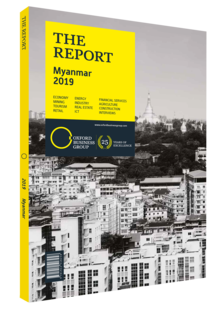U Myo Ohn, CEO, Campana Group : Interview

Interview : U Myo Ohn
What are the upsides of further 4G and fibre-optic penetration, and what role can foreign direct investment (FDI) play in developing such capacities?
U MYO OHN: The further proliferation of 4G can help the public in many ways, particularly in the expansion or adoption of e-commerce, e-government and e-health services. At present, 4G is cheaper and more widely available than fibre optics, and installing more telecoms towers should result in even better 4G connectivity. However, the integration of fibre optics into a community allows ready access to fast and efficient broadband networks. I expect that mobile internet will keep developing domestically and fibre-optic capacity will slowly be developed through FDI.
What are the benefits of the Singapore-Myanmar submarine cable (SIGMAR), and what challenges does the project face in attracting FDI?
MYO OHN: Myanmar’s telecommunications infrastructure is comprised of terrestrial cables that run in and out of the country from Thailand, China, India and Bangladesh. With terrestrial cables, there is ample opportunity for fibre cuts, which result in higher costs for operators, and Myanmar suffers one or two fibre cuts per day. But with undersea cables, cuts are extremely unlikely. As such, the major benefit of the SIGMAR project will be reliability, alongside increased capacity and more cost-efficient operations. In terms of financing, we have been very successful, as we raised $60m of total capital in our Series A and B equity-raising rounds. We are still missing the debt portion of our financing needs, but we hope to cover it through a loan soon, so that we can ensure that the project runs smoothly.
How have bureaucratic improvements helped to facilitate investments in infrastructure?
MYO OHN: Our experience is perhaps different from those of other investors because of the project’s complex nature. That said, we found that Myanmar has no guidelines on how to lay submarine cables and no environmental requirements for operations on the seabed, so we have needed to transfer knowledge on how to complete such a project. It definitely requires a lot of local know-how, influence, discussion and persuasion. Nonetheless, the framework that we have used came from the Myanmar Investment Commission (MIC), and it is working quite well for us. The MIC helps a lot when obtaining approval from central bodies, as it expedites processes and disperses blockages within the government’s ministerial network.
How do you foresee the deepening of ICT integration between Myanmar and its ASEAN peers?
MYO OHN: The more transmission lines that are laid into and out of Myanmar, the more data that will flow through the country, and the more connected it will be. Regarding regional integration, I believe Singapore is going to play a key role in furthering interconnectivity, because many data centre projects worth more than $1bn are currently under construction there. This means that data downloads from Myanmar and other countries in the region will be done through Singapore.
Amid digitalisation and increased use of storage on cloud servers, how can the public and private sectors work together to protect user data?
MYO OHN: Right now, cybersecurity is in its infancy in Myanmar. A high level of fraud is still committed through mobile apps, and security is definitely inadequate. The rules of international gateway services offer some protection, but there is still a long way to go until we can reach these international standards. I believe that the private sector can contribute in this area by improving the quality of corporate software and systems, while the public sector must improve considerably in areas where it is has a responsibility, such as enforcing rules on cybersecurity and internet hate crime. The environment will improve over time.
You have reached the limit of premium articles you can view for free.
Choose from the options below to purchase print or digital editions of our Reports. You can also purchase a website subscription giving you unlimited access to all of our Reports online for 12 months.
If you have already purchased this Report or have a website subscription, please login to continue.

